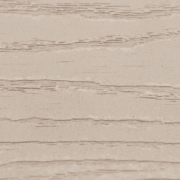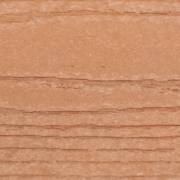From fixed to floating - we've got you covered
Not all boat docks are created equally. When building a dock, you’ll want to consider the area in which you are constructing it, the type of water it will come in contact with, and how you want to use it before choosing between types of docks.
Fixed Docks
Also known as a stationary dock or a permanent dock, a fixed dock remains in place and is connected to the bottom of the body of water with pilings. The length of the pilings depends on the depth of the body water as well as the desired height of the dock and its intended purpose. For example, if the dock is solely for viewing, it may be nice to have tall pilings that allow an elevated view of the area. If the dock will be used to entering watercraft, it will need shorter pilings that allow the deck to rest just above the water.
Stationary docks are great for choppy waters or areas that experience frequent waves because the pilings secure the dock and allow it to withstand the water’s movements.
Pilings may be made from steel or wood. The latter is preferred when the pilings will be in contact with saltwater.
The deck on a fixed dock can be made from lumber, composite or PVC. Their shape frequently depends on the depth and size of the body of water, the types of watercraft it will be used for, and the preferences of the homeowner. A fixed dock can be great for securing a boat, and it can also provide you with a wonderful fishing spot or an ideal view of the sunset. Fixed docks are built to last many years so homeowners can truly create an original space that extends their property.
Floating Docks
A floating dock is not anchored to the bottom of a body of water, though it is connected to land. They work well for bodies of water where the water level changes frequently, the water is very deep, or where the bottom of the body of water is too murky or unstable to support a fixed dock.
Floating docks can be purchased in segments that connect together to form a variety of shapes to suit a homeowner’s needs. When looking at a prefab dock, it’s important to check that the materials will work well in the type of water they’ll be submerged in.
Floating docks can also be built with lumber and a floating material such as barrels on which the lumber frame and decking will rest. This gives homeowners more flexibility in choosing their preferred decking.
Materials
We offer a variety of hardwood, vinyl, and composite materials for a virtually maintenance-free structure.
If you’re interested in hardwoods, we offer “Ipe”, “Cumaru” and “Garapa Gold” materials for a truly unique, beautiful, and long-lasting structure.
All of our fasteners are 316-grade stainless steel ring-shank nails, screws, and bolts. (Hot dipped galvanized nails and bolts are also available.)
WearDeck Built To Last
Made of HDPE reinforced with fiberglass, WearDeck boasts the highest live load rating in the industry. Our boards are weatherproof, waterproof, and heat-reflective. Rated for ground contact and underwater installation, WearDeck will be the last deck board you’ll ever need.
Weardeck reinforces High-Density Polyethylene (HDPE) with fiberglass to produce decking with unparalleled strength and durability. Their Limited Lifetime Warranty and proprietary mixture of additives ensure that you’ll enjoy your WearDeck for generations to come.
Foot Friendly -
Our splinter-free, heat-reflective decking provides permanent static protection and an embossed woodgrain surface for excellent slip-resistance. WearDeck comes in two new Barefoot colors designed to keep feet cool and comfortable on the hottest days.
Low Maintenance -
No more burdensome staining, sealing, painting, or sanding. WearDeck cleans up easily with soap and water. Unlike other deck boards, WearDeck resists stains from substances like sunscreen and redwine.
WearDeck Colors
-

- White
-

- Barefoot Grey
-

- Cool Grey
-

- Saddle
-

- Weatherwood
-

- Sand
-

- Barefoot Sand
-

- Cedar

